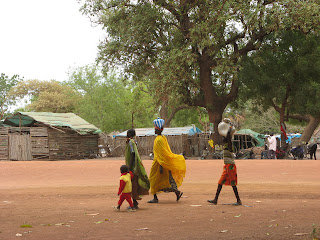No new cases of polio were seen in Sudan from 2004 until 2008, and the country was considered polio-free. Unfortunately in 2008, an outbreak resulted in 27 cases of the disease. Refugees returning from other countries were probably responsible for re-introducing the disease to Sudan. After the polio virus re-emerged, UNICEF and WHO initiated a program to vaccinate nine million Sudanese children. Along with the polio vaccine, Vitamin A is administered, which helps to strengthen their immunity against all diseases.
In 2009, 45 new cases of polio were registered – 40 of them in South Sudan.
In southern Sudan, it is very difficult to reach many of the children living in remote areas – less than 50 km of paved road surface exist in the whole region. In addition, it is hard to keep track of who has been vaccinated and who has not, because many people move from place to place often in order to find good grazing land for their cattle or in search of more fertile land to farm.
One duty of the nursing interns at the Kuron Peace Village Clinic is to walk up to remote Toposa villages in the hills surrounding Kuron, bringing polio vaccinations to administer to the children who live there. Some of the interns can be seen below, marking the fingernail of a child who has been vaccinated to distinguish him from those who have not yet received the vaccine.


